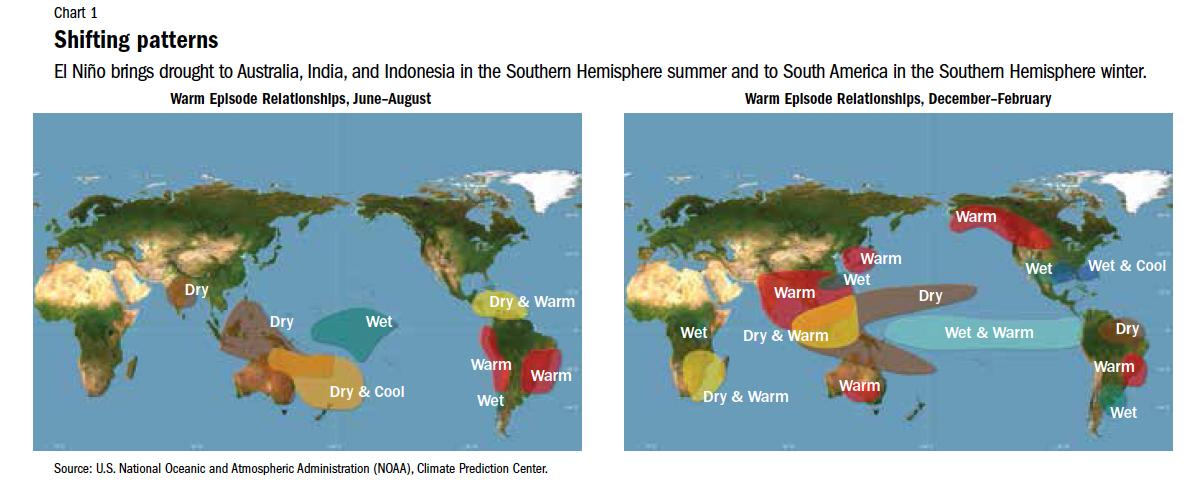AI Researchers Develop a New Deep Learning-based ENSO Forecasting Model
According a research, El Nino could wipe out $3 trillion from the global economy by 2029. For decades, economists have been trying to correlate macro-economic effects of El Nino— the IMF refers to these effects as “El Nino shocks.” Despite all the data available to predict El Nino conditions, climate scientists have been unable to predict the long-lasting effect of El Nino on the Earth and the economy. Artificial Intelligence-led researches have tried to solve different kinds of problems associated with the prediction of El Nino, but no model has been able to tell what’s going to happen beyond 18 months or so.
Top News: Google Cloud Summit 2023- Scale With AI
Now, AI researchers have developed a new Deep Learning model to study and predict El Niño-Southern Oscillation (ENSO) in the tropical Pacific. This DL-based ENSO Forecasting model can tell about events 22 months in advance.
Defining El Niño
Weather forecasting has always been one of the most fascinating, yet an unpredictable part of our scientific expertise.
For centuries, humans have tried different methods to record, analyze and forecast how some hydrological factors influence the terrestrial climate thousands of miles away! Finally, deep learning climate forecasting models are coming to the rescue of climate scientists who can tell more accurately about the lasting effects of ENSO all over the world.
El Nino originates along the coast of South America and over the central Pacific Ocean due to the drop in sea surface air pressure. The low pressure region moderates the trade winds, allowing equatorial countercurrent wind to hover over the coastline of Peru. The intermixing of the warmer water on the ocean’s surface with the cooler deep water below causes the pressure to drop in the eastern parts of the Pacific Ocean. An El Niño influence climatic changes around the Pacific region;
- drought in the western Pacific (including Australia)
- rains in the equatorial coast of South America, and
- storms and hurricanes in the central Pacific region
 Climate scientists and environmentalists can vouch for oceanic data to analyze the effects of El Niño, and its negative counterpart, La Niña.
Climate scientists and environmentalists can vouch for oceanic data to analyze the effects of El Niño, and its negative counterpart, La Niña.
AI researchers Haoyu Wang, Shineng Hu and Xiaofeng Li have developed a deep learning-based model for ENSO prediction, called the Spatio-Temporal Information Extraction and Fusion (STIEF) model.
The STIEF Model contains two key components:
1) spatiotemporal feature extraction blocks and
2) fusion blocks
Both blocks work in sync using different types of convolutional networks for input and down-sampling of data related to ocean heat content (OHC) and sea surface temperature (SST).

AI researchers were able to develop the new ENSO prediction model with a longer forecasting length and higher accuracy. The STIEF Model takes input from the global ocean data to make predictions using Time Convolutional Network (TCN). The STIEF Model is trained for each forecast lead month for 24 months, resulting in the creation of powerful and accurate transfer learning techniques based on the global ocean anomalous SST and OHC data for each forecast lead month. The researchers confirmed they are using backward propagation of errors or backpropagation to observe ENSO signal extracted from their STIEF Model. This ensures better tracking of ENSO score predictability based on location and lead time based on TCN.
The researchers wrote in their published paper: “Our STIEF model is a promising tool for short- and long-lead ENSO forecasts and many aspects of it are worth further exploration. First, the model performance can potentially be further improved with updated algorithms. However, it is unclear what the best performance DL-based models may eventually achieve and whether there is an inherent limit. Second, our finding on the importance of including all three tropical ocean basins in the forecast OLAR Manuscript Template Page 13 of 16system highlights the necessity of continuous pantropical observations. The physical mechanisms of the three ocean basin interactions need to be further refined, even though the Pacific-Atlantic and Pacific-Indian interactions have been studied separately. Third, the STIEF model is only used to predict the Niño3.4 index currently and in the future needs to be adjusted to explore the implications for ENSO diversity. How the STIEF model performs for forecasts in other ocean basins or decadal climate variability is also worth further investigation.”
As per research, we are stacked against a really big El Nino year. With fears of economic depression looming large on the world, having an AI-powered ENSO Prediction model could prove to be a decisive resource for climate scientists and economists in preparing against the El Nino months.
Source; https://spj.science.org/doi/10.34133/olar.0012


Comments are closed.